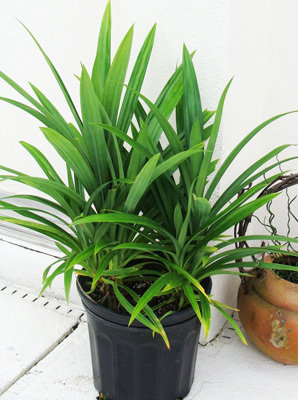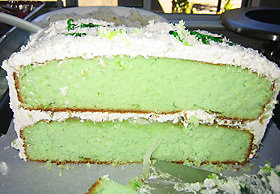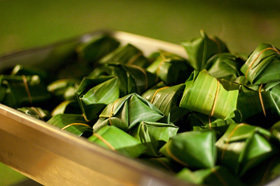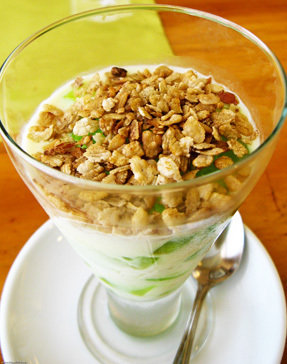





True to the ?pan? in its name, pandan is a culinary herb commonly added to southeast Asian cuisine. Also known as dwarf or fragrant screw pine, the plant reportedly has an earthy scent similar to hay, while the cooked leaves smell like caramel corn. The flavor has been described as akin to roasted breadfruit or hazelnut.
 As its species name--Pandanus amaryllifolius or odorus--suggests, pandan's strappy leaves resemble those of amaryllis. In most cases, the herb is grown as a clumping plant that can reach 5 or 6 feet in height, with leaves about 2 inches across and 30 inches long. As they age, the stems make aerial roots.
As its species name--Pandanus amaryllifolius or odorus--suggests, pandan's strappy leaves resemble those of amaryllis. In most cases, the herb is grown as a clumping plant that can reach 5 or 6 feet in height, with leaves about 2 inches across and 30 inches long. As they age, the stems make aerial roots.
Only hardy in USDA zones 9 to 12, pandan prefers humid, tropical environments and moist soils, where it will grow in either sun or partial shade. It must be protected from frost, which can shrivel it overnight. Fortunately, despite its origin in humid climes, pandan also makes a surprisingly tolerant houseplant. It has been listed by the New York  Times as one of the types most difficult to kill. Pandan is seldom bothered by pests and, in fact, is sometimes used to repel cockroaches.
Times as one of the types most difficult to kill. Pandan is seldom bothered by pests and, in fact, is sometimes used to repel cockroaches.
If you wish to harvest most of the plant as commercial growers do, cut its stem 8 to 12 inches above the ground. You can then peel off the leaves of the cut portion and discard the stem. The herb will recoup by sending up suckers at its base. Once well-rooted, those suckers are easy to separate from the plant and will allow you to share it with friends.
 To maintain a less shorn appearance, most gardeners will probably prefer to cut individual leaves as they are needed. You can use kitchen shears to snip leaves as close to the stem as possible without gouging that stem. Since the bottom ones tend to yellow, choose those that are still entirely green for your cooking.
To maintain a less shorn appearance, most gardeners will probably prefer to cut individual leaves as they are needed. You can use kitchen shears to snip leaves as close to the stem as possible without gouging that stem. Since the bottom ones tend to yellow, choose those that are still entirely green for your cooking.
Although this plant doesn't flower, some sources indicate that there is a tree form which will bloom. I'm not sure, however, whether they are referring to the same species or to another screw pine called kewra (Pandanus odoratissimus). Its flowers, mostly composed of white bracts, flavor and scent a rosewater-like liquid.
 Pandanus amaryllifolius leaves have the best odor and taste when slightly wilted, so they can be cut a couple days before they are to be used. They shouldn't be allowed to dry out completely, however, or they will lose most of their piquancy. Those leaves are often ripped into ribbons and knotted before being dropped into simmering liquid, to make them easy to remove.
Pandanus amaryllifolius leaves have the best odor and taste when slightly wilted, so they can be cut a couple days before they are to be used. They shouldn't be allowed to dry out completely, however, or they will lose most of their piquancy. Those leaves are often ripped into ribbons and knotted before being dropped into simmering liquid, to make them easy to remove.
When left whole, they are frequently used to wrap rice or meats. One of the herb's most popular uses is as a dye and flavoring for a groovy-looking green chiffon confection known as pandan cake. Now that I think of it, a green cake might be just the thing for the holidays, perhaps sprinkled with some similarly green pistachios for an effect that could be just pan-dandy!
Photos: The thumbnail and first photo are by fleurone, courtesy of the Dave's Garden PlantFiles. The cake photo is by Glenn G, courtesy of Wikimedia Commons. The pandan wraps photo is by Ann P and the buko pandan photo by dbgg1979, both courtesy of Flickr Creative Commons.
Copyright © www.100flowers.win Botanic Garden All Rights Reserved